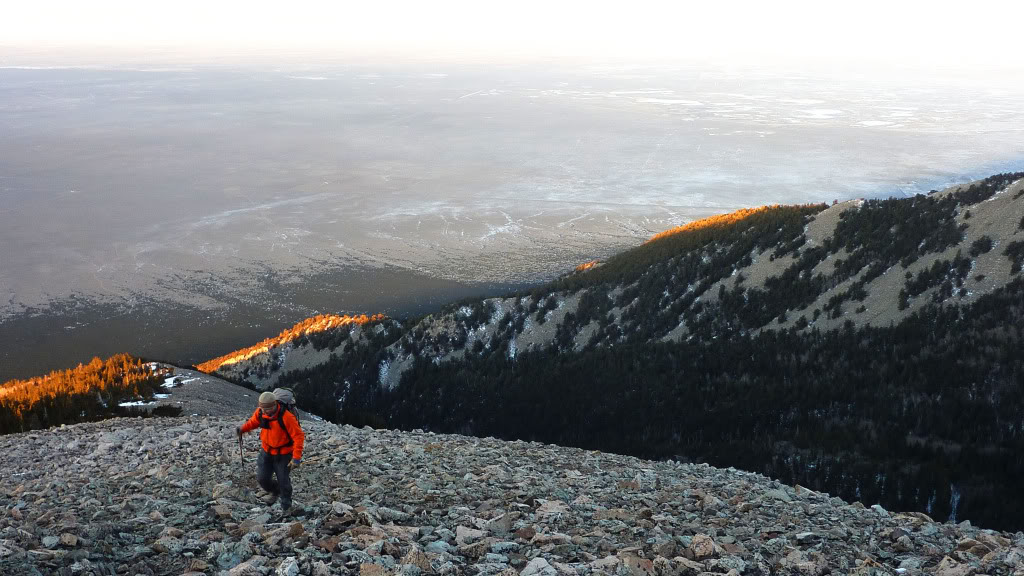
On our way up Little Bear’s Southwest Ridge.
Normally by January Colorado’s snowpack has reached respectable totals, enough to make inbounds skiing a priority. This year has been different. Inbounds skiing has been a bust, and even backcountry prospects are few and far between and marginal in quality. Rather than sit around and whine about it, a few friends and I decided to go ahead and take what Colorado seems to be granting this year; a solid window for winter hiking.
We decided on Little Bear because David and Andrew, who have been on a quest for the Colorado 14ers for the past few years, had not climbed it yet. Though Brian and I had numerous ascents of Little Bear previously, we agreed that a completely new route in a new season seemed appealing. The Southwest Ridge route is a logical way to hit this peak in winter as it completely avoids avalanche danger (even on a good snow year), and ends with a spectacular and sporty ridge traverse between South Little Bear and Little Bear.
We departed Denver in the afternoon on New Year’s Day and headed for Alamosa. After an uneventful drive to the trailhead (if you could call it that), we cashed in for the night under a windless, cloudless sky. Warm in my bivy bag, I just laid silent and admired the views of the moon, stars, and the shadowy silhouette of the Sierra Blanca far above. I was excited for the next day’s task, it had been way too long since I had gotten out on a challenging climb.
At 3:30am we were geared up and heading through the woods to the southwest of Tobin Creek. This route isn’t at all established, so the use of map and compass or GPS is mandatory. We made our way east through a dense forest of brush and foliage until we crossed the creek around 9,150′, then we bushwhacked north, paralleling the creek for a half mile. We didn’t expect to come across too much snow, but the complete lack of snow below treeline was a tad surprising. It might as well have been June. We broke out of the trees just as the sun was coming over the horizon at 6am. So far so good, we were right on schedule..
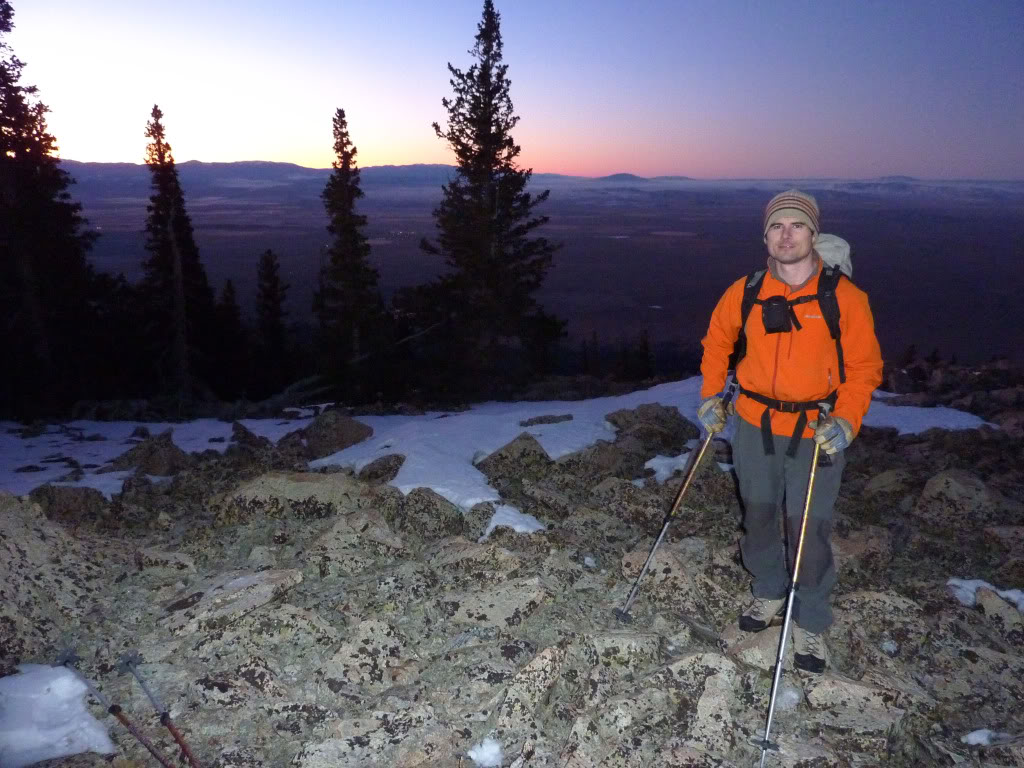
Brian fighting off the tiredness that comes standard with a 3am start.
If you plan on hiking this ridge be prepared for miles and miles of talus hopping. From the base of the Southwest Ridge to the summit of South Little Bear, literally 100% of the route is comprised of milk jug to suitcase sized rocks stacked on top of each other. This route is one of the longer slogs I’ve ever been on, but I’d also say it is very much worth the views and reward of Little Bear.
This ridge eventually narrows into somewhat of a spine, then takes an undulating and winding course to the summit of South Little Bear. Sometimes it was easier to skirt below the ridge crest on the southeast side to save elevation.
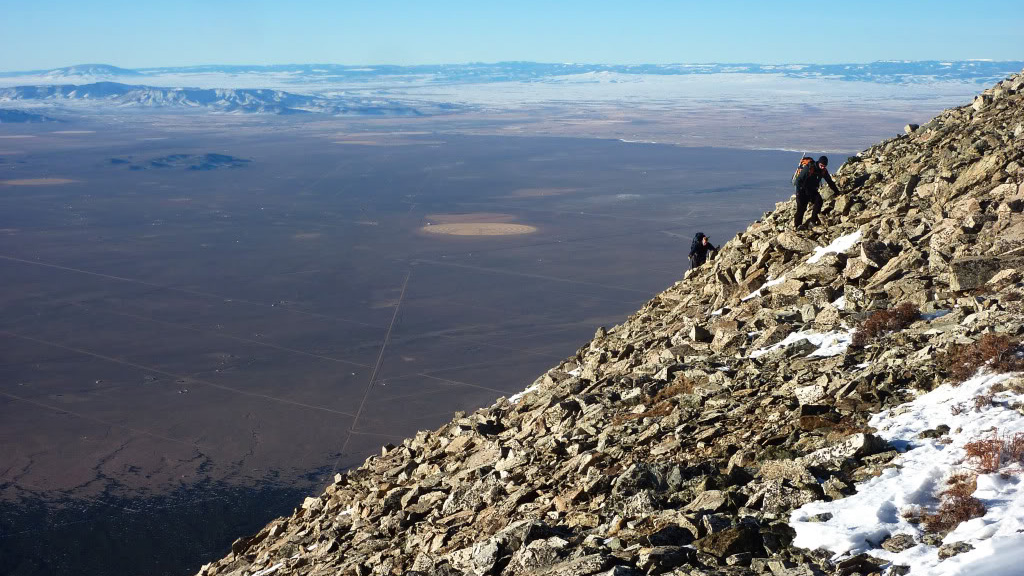
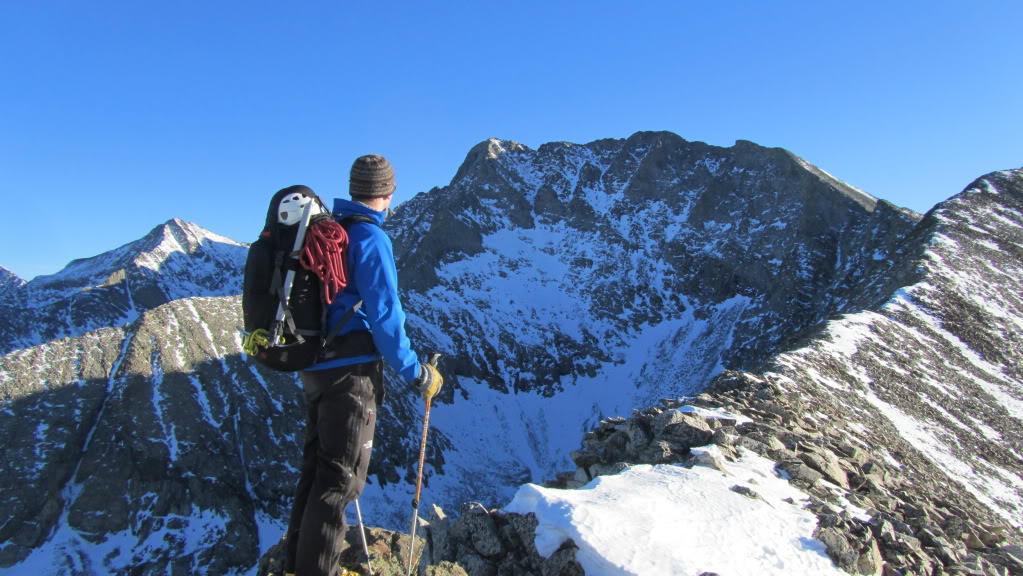
After a long while, Little Bear finally reared its head.
What a spectacular view of the peak this vantage point grants. I was in awe for a moment, as I had never seen the Hourglass Gully from this angle. Coming up the standard West Ridge Route does not lend views of the peak like this one.
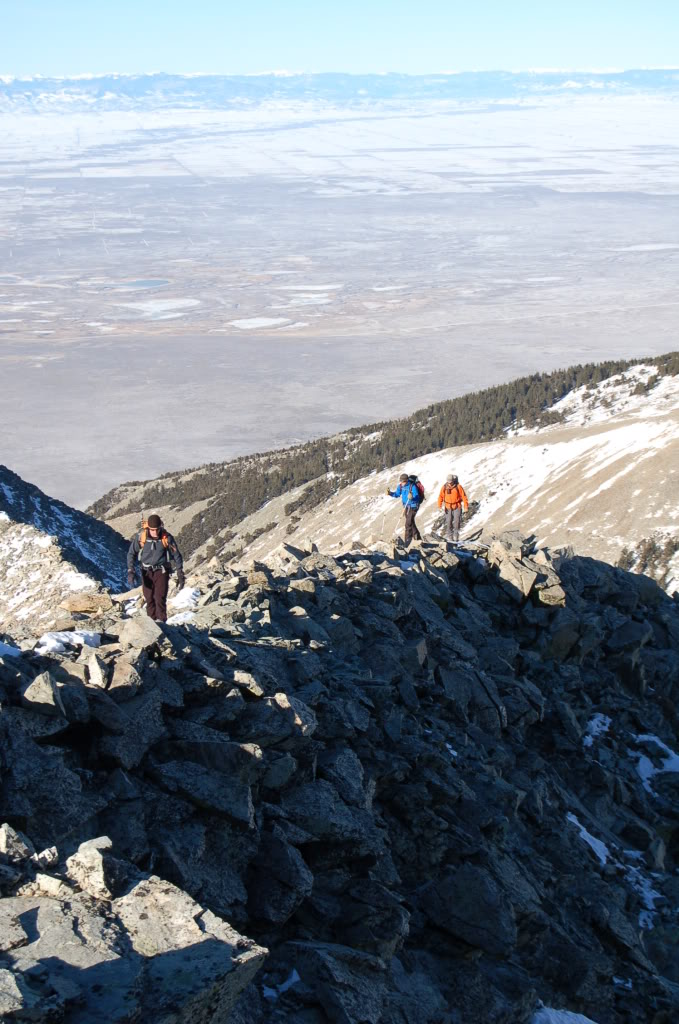
Getting higher.
The day was literally perfect from a weather standpoint: bluebird, 30 degrees, and not a breath of wind. I had to keep reminding myself that we were hiking in calendar winter.
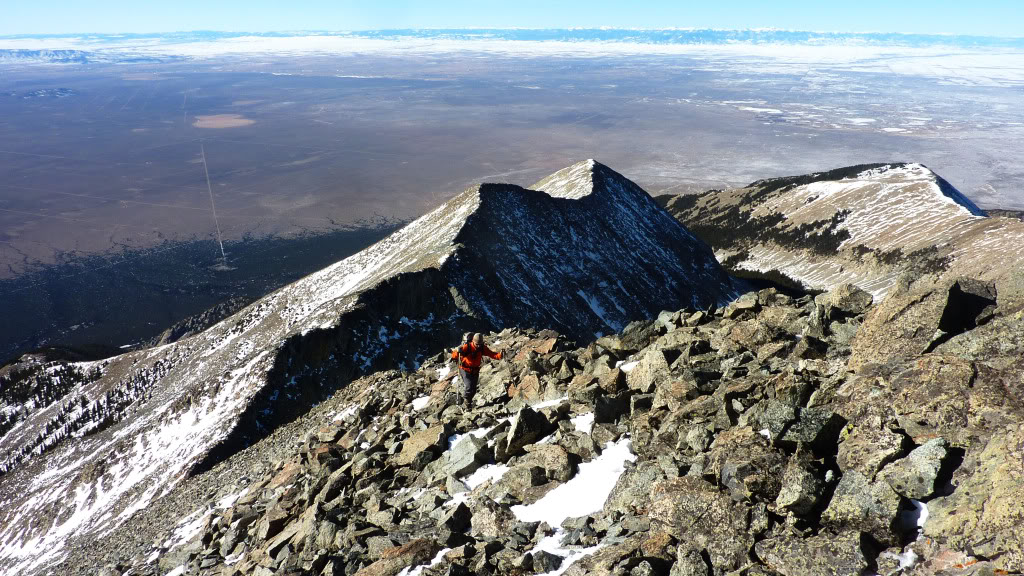
The route turns north.
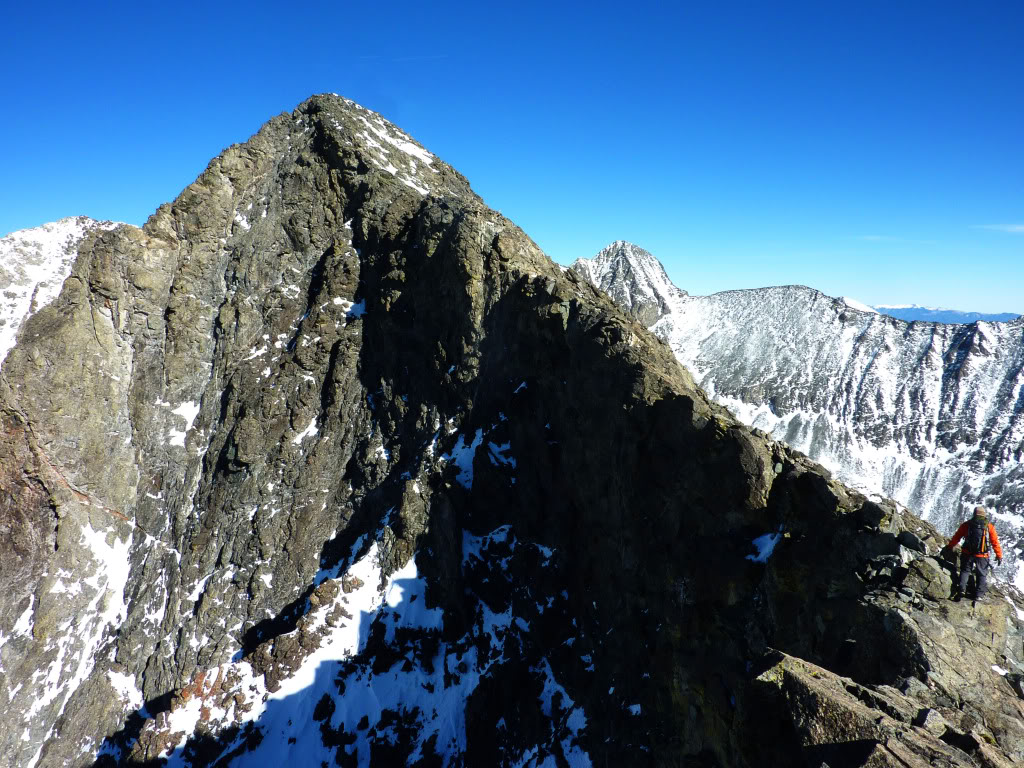
…and then steepens and narrows along the final push to South Little Bear’s summit.
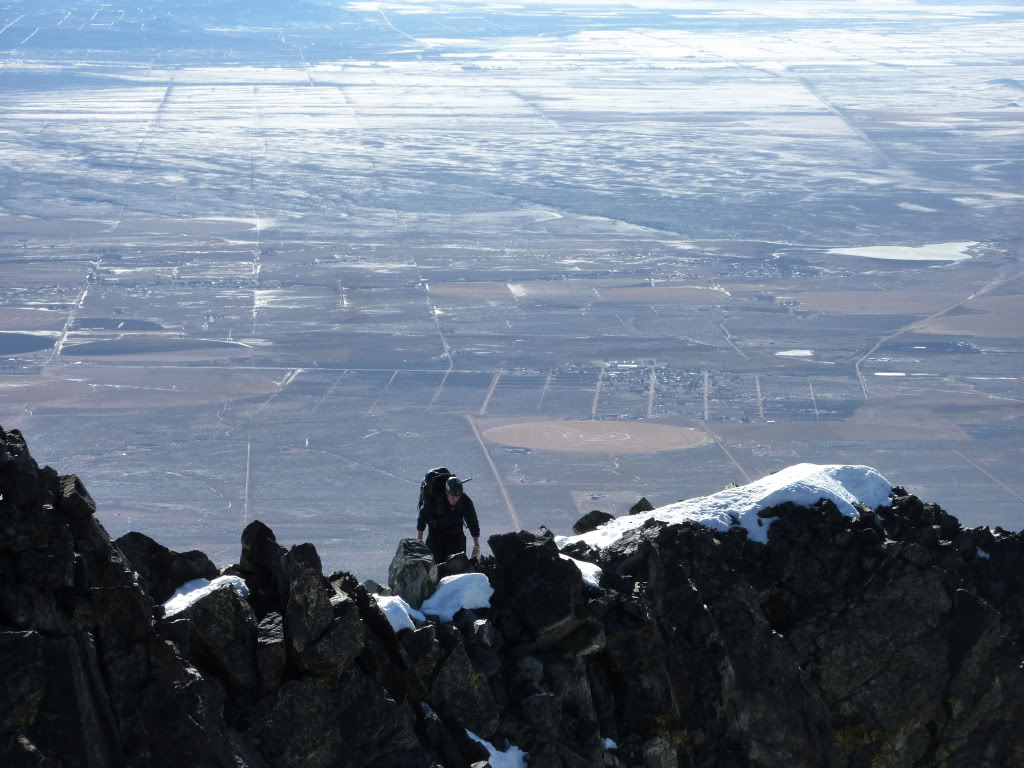
David and the town of Blanca, nearly 7,000′ below.
The moves through this section require some attention, a prelude to the traverse to come. With a final Sangrean grunt, we topped out on South Little Bear at noon. It had taken us nearly 8 hours to get to this point and I wouldn’t exactly say we were moving slow.
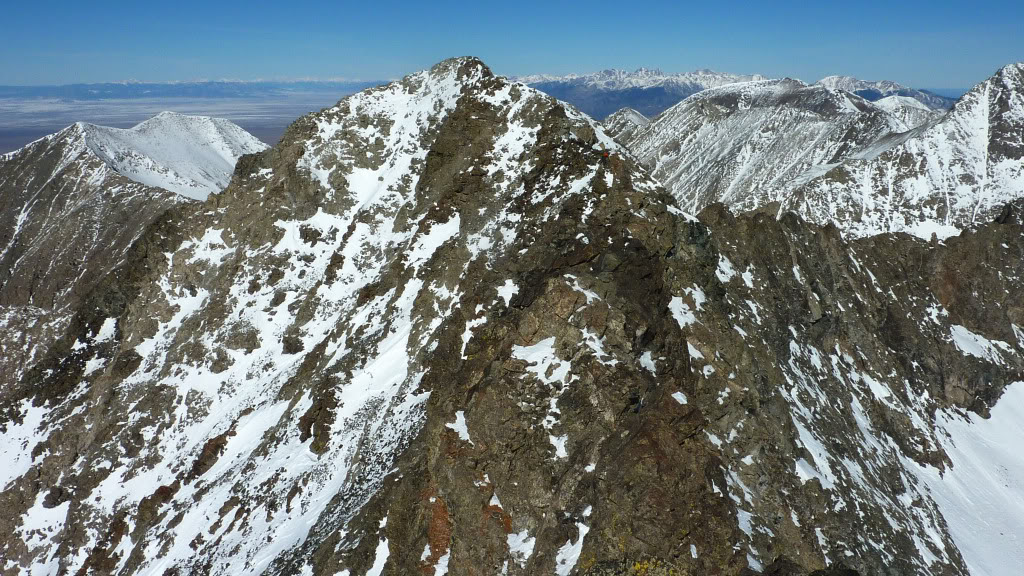
A look at the traverse to Little Bear.
Without wasting much time, we began the traverse. A few moves to the west took us below the ridge on snowy ledges, which we then traversed across until we met back up on the ridge crest. This sort of became the norm; drop below the ridge slightly and traverse, then gain the ridge again where it looked feasible. In a few spots the ridge narrowed into a knife, which required us to stay on top.
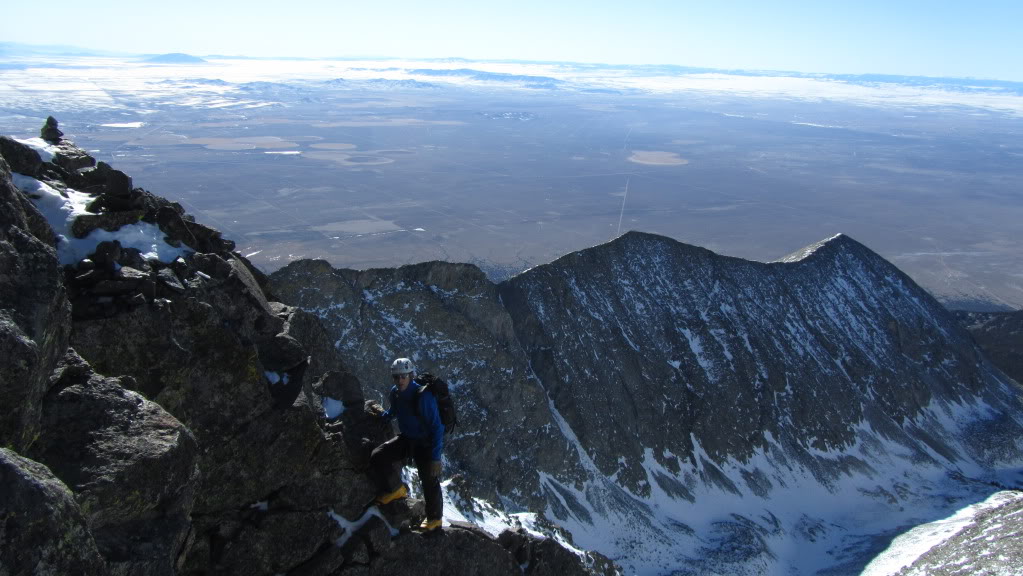
Only once did we drop below the ridge crest to the east, as the exposure off that side is pretty intense.
Beyond the Hourglass Notch, the climb was relatively straightforward to the summit of Little Bear. Though we brought a 30 meter rope, we didn’t feel the need to use it nor did it seem like it would have been very feasible to do so. The traverse took us roughly 45 minutes to complete.
We took some time to relish the place we were in, as well as refuel as we had been at it for nearly 9 hours by this point.
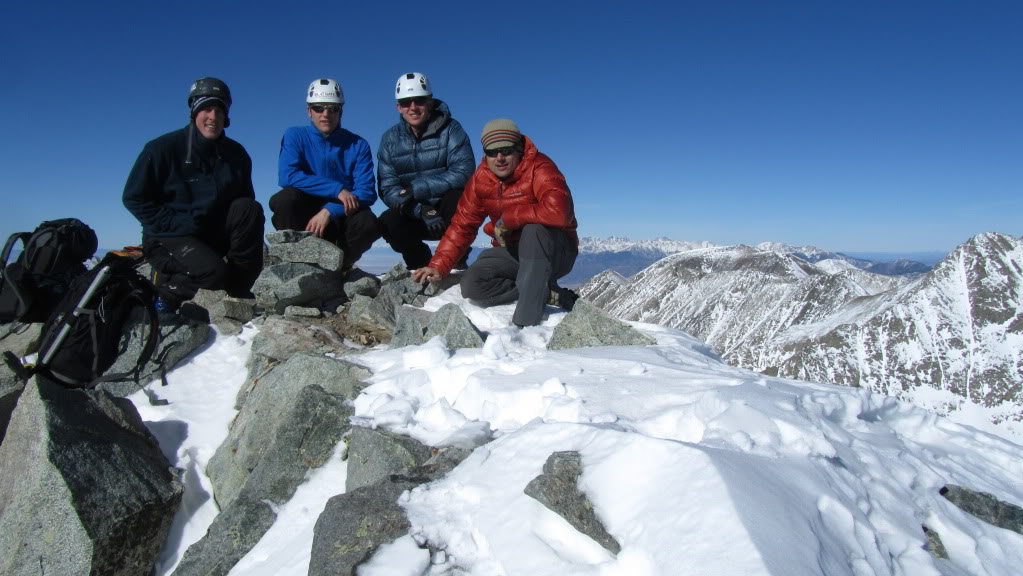
Group shot on the summit (L to R – David, Me, Andrew, Brian).
After 30 minutes or so, we started back.
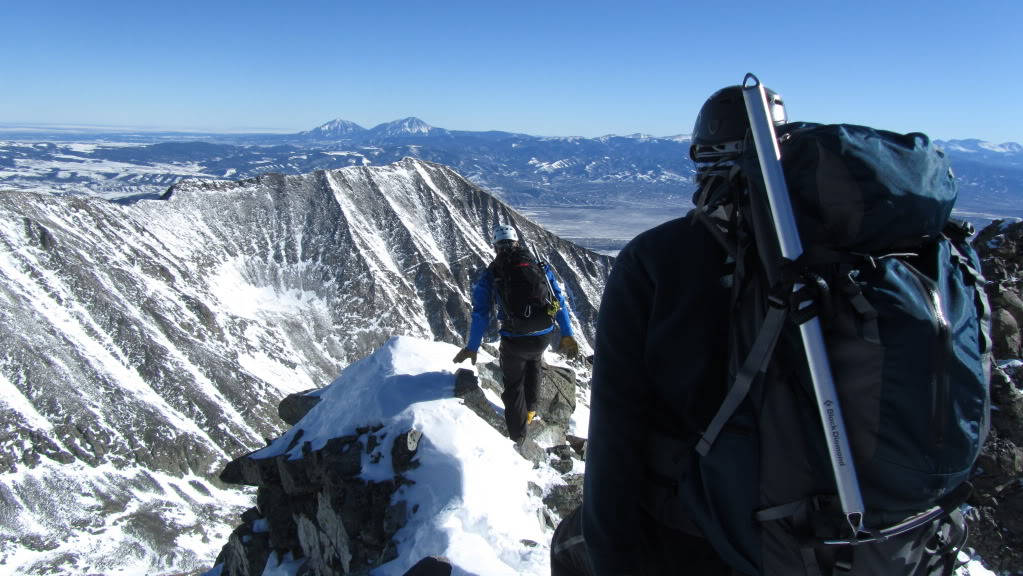
The traverse in the opposite direction seemed to take less time as we were upclimbing the major difficulties.
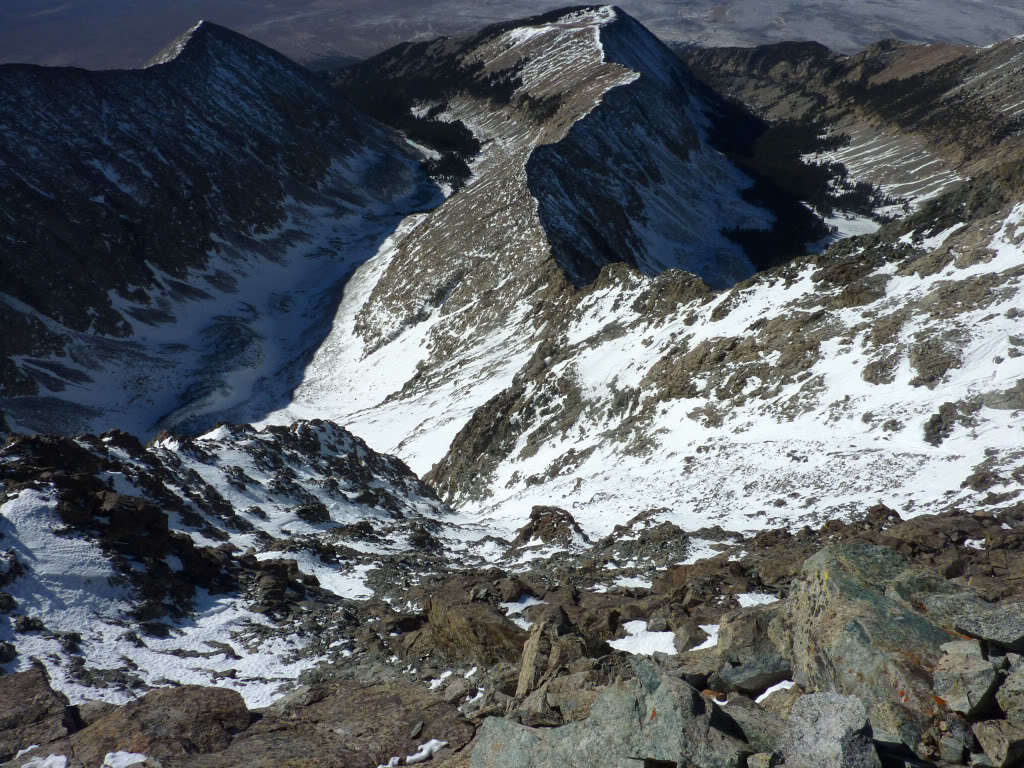
A look down the Hourglass Gully.
We hit South Little Bear’s summit at 2pm, and took another food break a little lower where we had stashed water and trekking poles. While the accomplishment of summiting Little Bear in winter had begun to sink in, so did the reality of the descent we were facing. This is about where I wish I were skiing instead of hiking down hill on talus in double plastic mountaineering boots.
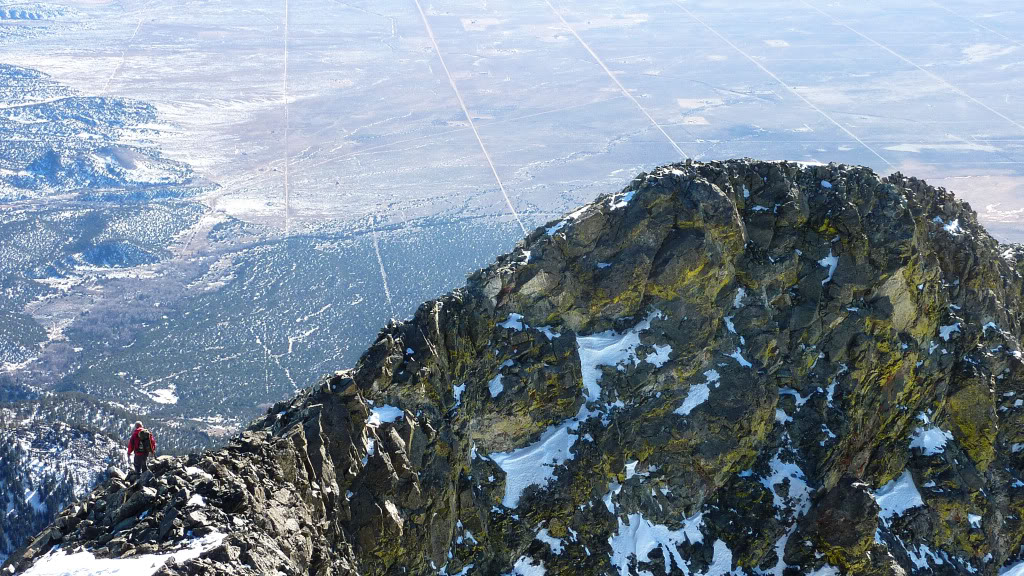
A nice one of Brian.
We slowly but surely made our way down the ridge, turning back to the southwest before catching one final glimpse of the peak.
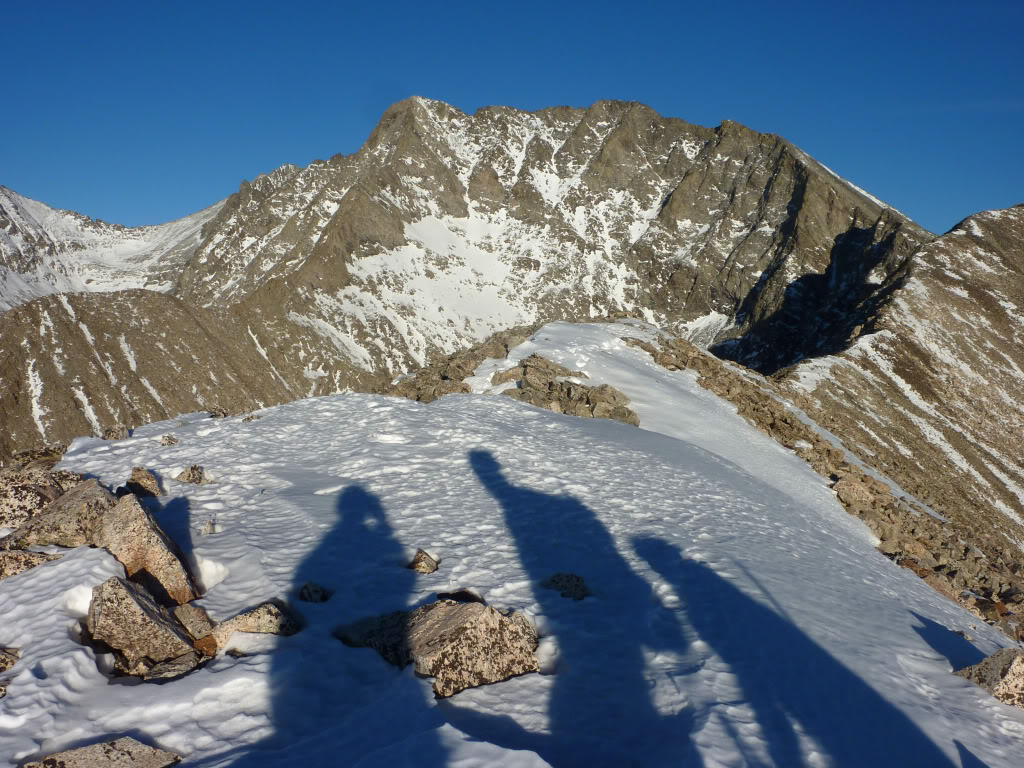
Waning shadows.
Back below treeline, we located our snowshoe stash and donned headlamps. The sun breathed its last gasp and we were once again plunged into darkness.
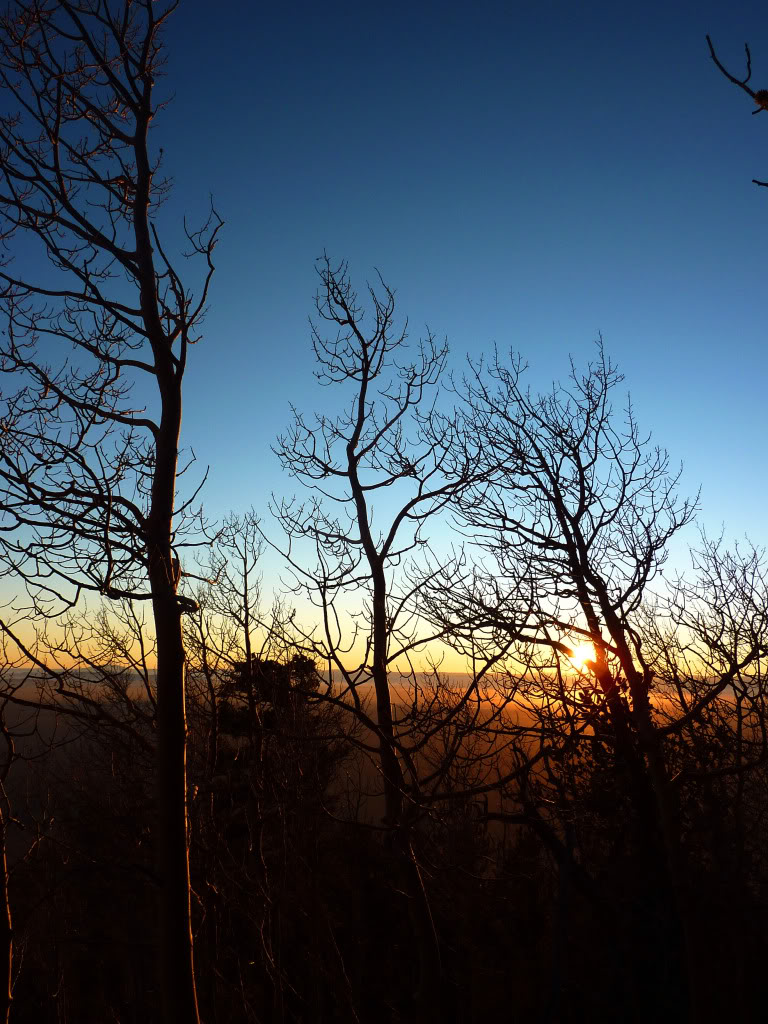
A classic Sangre sunset.
Two hours and a clinic on how to use a GPS later, we were back at the car enjoying a cold one. Chipotle in Pueble capped off the day, we arrived back in Denver around 11pm.
My overall impression of this route is that in winter and early spring it makes the most sense for an ascent of Little Bear. The shadowed and icy Hourglass route rests above several cliff bands, which have claimed lives in the past in winter. The Northwest Face would be another option, but lacks the views and is more prone to rockfall and verglass than the Southwest Ridge.
Thank you Andrew, David, and Brian for the company and a great day out, and thank you for reading!

Excellent trip report! My friend and I are contemplating which route to ascend in April. Which would you say you prefer?
Thank you Mac. Of all the routes on Little Bear I’d have to say Southwest Ridge is the safest and most reliable/consistent from year to year. The Hourglass can go either way in April – I’ve climbed it in April in excellent snow conditions, and on that day I’d say the Hourglass was the best route, but I know others have tried it in March/April and found lots of unconsolidated snow and ice, and on those days the Southwest Ridge was probably the best route. There’s also less rock fall potential on the SW Ridge. The Hourglass is a notorious spot for that. I hope this helps!